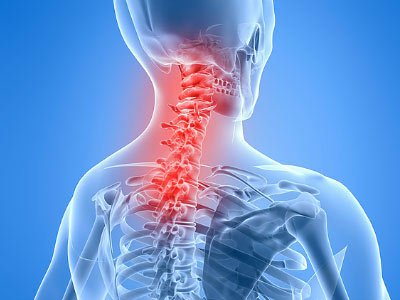You may take for granted how easy it is to turn your head to carry on a conversation or watch a tennis match. Once you lose that ability, you recognize how much it means to be able to turn your head without pain. Arthritis in the neck severely restricts your neck’s movements and your quality of life. Don’t wait until you completely stiffen up. Call the experts at Pain Management in NYC to get a firm diagnosis and effective treatment.
As you age, the bones and tissue in your body change. Because of the many movements you make with your neck, any changes or limits to that flexibility becomes immediately noticeable. Because the average head weighs 10 or 11 pounds, it’s an obvious weight to carry on such a slender part of your body. As your cervical facet joints break down over time, the smooth head movement you enjoy is compromised.
Your neck is made up of stacked bones called vertebrae that are interspersed with cushioned discs. Over time or due to injury or disease, this carefully balanced structure can develop issues, such as narrowing of the spinal canal, ruptured or herniated discs, or rough spots from bone growth that aggravates nerves. Your discomfort from these conditions can be just a nuisance, or it can grow into debilitating pain.
Symptoms of Neck Arthritis

- Numbness or tingling in a limb
- Weakness that results in difficulty holding, grasping or picking up objects
- Stiffness and pain that worsens with activity
- A popping or crackling sensation or sound when turning or bending your neck
- Muscle spasms that can lead to headaches
- Impairment that affects your everyday activities
- Disturbed sleep and subsequent fatigue and irritability
Symptoms may be acute, lasting six weeks or less, or become chronic if the pain continues for longer than three months. To reduce or eliminate your symptoms, seek treatment from the back pain specialists in Manhattan at physical therapy center NY. They find the best neck arthritis treatment for your individual symptoms.
Cause of Arthritis in the Neck
In your neck are two small joints called facet joints, positioned to the right and left of each vertebral bone. These joints enable your spine to move in a limited fashion backward, forward and to the side. This joint is encased in a protective fluid called synovial fluid that helps provide smooth movement.
As the cartilage of the facet joint wears with time, bone may rub against bone, causing excessive growth or bone spurs. The combination of bone spurs and the constant rubbing results in inflammation and pain, as well as impingement on delicate spinal nerves. Also, small fragments of bone or cartilage can break away and float in the synovial fluid or become lodged in different areas, increasing inflammation and discomfort. Common causes that aggravate this condition include:
- Age, since wear-and-tear increase as you grow older
- Injury that results in tearing in the joints or surrounding cartilage
- Genetics that indicate a family history of osteoarthritis
- Weight that adds extra stress to your joints
- Occupations that require repetitive, heavy lifting or improper straining
Diagnosing Cervical Pain or Neck Arthritis
Because neck arthritis can mimic other conditions, the top-rated New York arthritis doctor do a thorough physical exam to determine the nature of your symptoms and assess any restrictions on your mobility, reflexes, or flexibility that arise from your neck pain. If your pain worsens or comes on suddenly, your doctor may also request diagnostic measures, such as:
- Imaging tests like x-rays or MRIs to check the bone structure and setting of your spinal column
- Blood tests to rule out any infections
- Nerve testing, also called electrodiagnostic testing, to test your nerves’ reactions to stimulation
- Careful, monitored diagnostic injections that strategically place pain blockers to determine where the pain originates
Treatment for Arthritis in the Neck
Most treatments fall into one of two categories: non-surgical and surgical. Your pain specialist works first with the non-surgical options as the least invasive opportunities to relieve your discomfort. These include:
- Over-the-counter pain relievers
- Rest when symptoms flare up
- Moderate but careful activity with modifications that avoid heavy lifting
- Hot and cold packs for symptom management
- Occasional prescription narcotics
- Physical therapy
- Radiofrequency ablation, which uses tiny heated needles to place lesions along pain-firing nerves to block their signals
Minimally invasive surgical options include the two most common neck surgeries:
- Posterior cervical laminectomy, during which a small portion of your cervical spine is removed to relieve pressure and make room for your spine to decompress
- Anterior cervical discectomy and fusion, when a disc or part of a disc is taken out through the front of your neck, replaced with a spacer and fused to the adjoining vertebrae for support
No matter what kind of treatment you need, you’ll find it at Pain Management NYC. Contact us for an appointment.

Leon Reyfman, MD, is a top-rated, best-in-class interventional pain management doctor. He is a nationally recognized pain relief specialist and is among the top pain care doctors in New York City and the country. He is an award-winning expert and contributor to prominent media outlets.
Dr. Leon Reyfman has been recognized for his thoughtful, thorough, modern approach to treating chronic pain. He has been named a “top pain management doctor in New York” and one of “America’s Top Doctors™” for advanced sports injury treatments. Among other accolades, he was voted by peers as a “Castle Connolly Top Doctors™” and “New York Super Doctors™”. Dr. Leon Reyfman was a part of the medical team at the 2016 Summer Olympic Games in Rio de Janeiro, Brazil.
